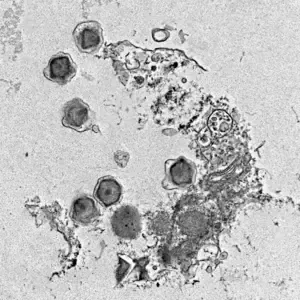
Meet the 230 New Giant Viruses Revolutionizing Our Oceans!
2025-06-06
Author: Daniel
Groundbreaking Discovery Shakes Up Marine Science
In a stunning breakthrough, scientists at the Rosenstiel School of Marine, Atmospheric and Earth Science have unveiled 230 previously unknown giant viruses that could change the way we understand ocean ecosystems. These colossal microbes aren't just swimming around—they play a critical role in the survival of marine protists like algae, amoebas, and flagellates, which form the foundation of the oceanic food web.
Giant Viruses and the Health of Our Oceans
These large DNA viruses are more than just ocean inhabitants; they are determining factors in public health, often linked to harmful algal blooms that threaten both marine life and human wellbeing. This new study equips local leaders with vital insights to prepare for and potentially mitigate the devastation caused by these blooms.
High-Tech Methods Reveal Hidden Viral Diversity
Utilizing advanced computing techniques, the researchers have identified novel viruses buried within existing marine DNA datasets. Their findings, published in the journal Nature npj Viruses, showcase not just quantifiable individuals but an astonishing 530 new functional proteins, including nine proteins crucial for photosynthesis, suggesting that these giant viruses might actually manipulate their hosts during infections!
A New Tool for a Vast Oceanic Challenge
Until now, identifying giant viruses has been an uphill battle due to limitations in existing bioinformatics tools. Enter BEREN—an innovative program developed by the researchers to detect these viral genomes in extensive public DNA sequencing datasets. With BEREN, the team was able to decode DNA from nine major ocean sampling projects, providing a comprehensive understanding of giant virus genetic material.
The Impact on Ocean Ecosystems
The lead author of the study, Benjamin Minch, highlighted the significance of the findings: "Giant viruses possess genes involved in crucial cellular functions traditionally found only in living organisms, underscoring their role in manipulating their hosts and affecting marine biogeochemistry." This revelation opens new doors for the scientific community, especially when it comes to tracking pollution and potentially harmful pathogens in our coastal waters.
Unlocking New Potential Through Research
The research team, utilizing the University of Miami’s powerful Pegasus supercomputer, not only reconstructed vast microbial community libraries but also laid a foundation for future studies. By exploring these new viral functions, scientists could uncover novel enzymes with biotechnological implications, potentially revolutionizing our approach to marine science and public health.
A Call to Action!
The study, titled "Expansion of the genomic and functional diversity of global ocean giant viruses," paves the way for crucial advancements in monitoring our oceans. The tools developed in this study, especially BEREN, are now available for researchers around the world, promoting collaboration in the quest to understand and protect our marine environments.


 Brasil (PT)
Brasil (PT)
 Canada (EN)
Canada (EN)
 Chile (ES)
Chile (ES)
 Česko (CS)
Česko (CS)
 대한민국 (KO)
대한민국 (KO)
 España (ES)
España (ES)
 France (FR)
France (FR)
 Hong Kong (EN)
Hong Kong (EN)
 Italia (IT)
Italia (IT)
 日本 (JA)
日本 (JA)
 Magyarország (HU)
Magyarország (HU)
 Norge (NO)
Norge (NO)
 Polska (PL)
Polska (PL)
 Schweiz (DE)
Schweiz (DE)
 Singapore (EN)
Singapore (EN)
 Sverige (SV)
Sverige (SV)
 Suomi (FI)
Suomi (FI)
 Türkiye (TR)
Türkiye (TR)
 الإمارات العربية المتحدة (AR)
الإمارات العربية المتحدة (AR)